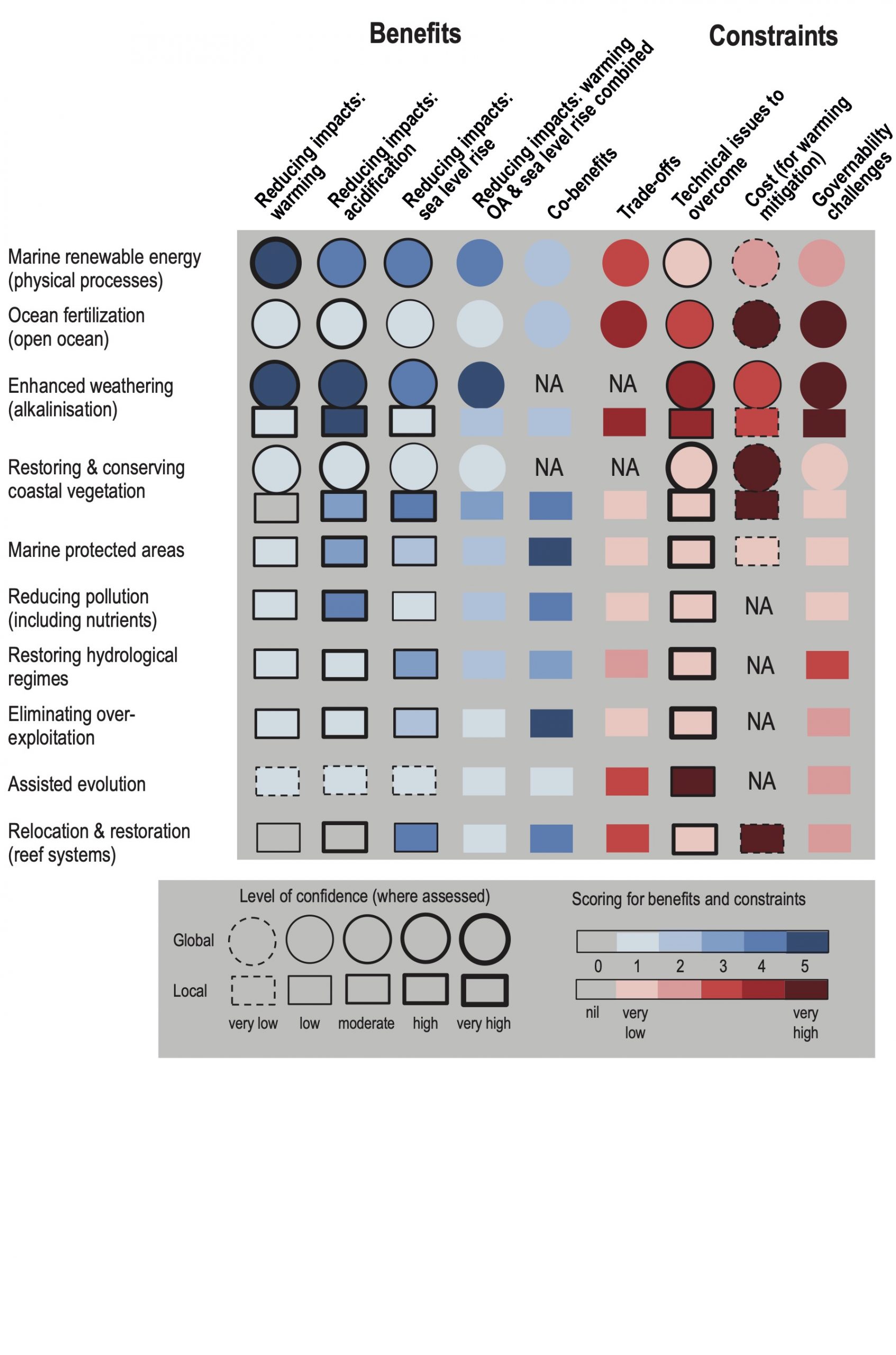
Figure 5.23
Summary of potential benefits and constraints of ocean-based risk-reduction options using natural processes, from literature-based expert assessments by Gattuso et al. (2018). Mitigation effectiveness was quantified relative to Representative Concentration Pathway (RCP)8.5, assuming maximum theoretical implementation, with reduction of climate-related drivers considered at either global or local (<100 km2) scale, shown as circles or rectangles respectively. Impact reduction, co-benefits and trade-offs are in the context of eight sensitive marine ecosystems and ecosystem services. ‘Technical issues to overcome’ is based on scores for technological readiness, lead time for full implementation and duration of effects. Cost is based on USD per tonne of CO2 either not released or removed from the atmosphere (for global measures) or per hectare of coastal area with action implemented (for local measures). ‘Governance challenges’ shows the potential difficulty of implementation by the international community. NA, not assessed. Additional information on scoring methods is given in SM5.4, Tables SM5.9a and SM5.9b.